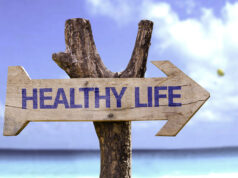 The New York City Health Department recently began airing a new television ad to educate New Yorkers about the harmful effects of secondhand smoke on children.
The New York City Health Department recently began airing a new television ad to educate New Yorkers about the harmful effects of secondhand smoke on children.
A Health Department survey suggests that approximately 300,000 children may be exposed to cigarette smoke at home. The Health Department has run numerous hard-hitting anti-tobacco ads in recent years; however, this one was created specifically to warn New Yorkers about how secondhand smoke damages children’s health.
Every year, secondhand smoke contributes to more than 750,000 ear infections and 200,000 cases of asthma among US children. As the new ad’s graphic images remind viewers, secondhand smoke makes children more susceptible to pneumonia, and it contributes to lifelong health conditions such as asthma.
A new Health Department report, “Childhood Asthma in New York City,” finds that nearly one in 10 New York City children (9%) currently has asthma, meaning they have experienced an asthma attack within the past year. The city’s current asthma level is almost twice that seen among children nationally (5%)—and one in four New York City children who currently have asthma lives with an adult who smokes.
Besides contributing to asthma, secondhand smoke increases the likelihood of Sudden Infant Death Syndrome in newborns. Children whose parents smoke are twice as likely to become smokers themselves.
The Health Department’s new TV ad airs in conjunction with a previously-aired one that uses similar graphic techniques to show how cigarettes affect a smoker’s lungs, mouth, teeth and brain. Its tagline: “Cigarettes are eating you alive.”
“When parents smoke, they put their child’s health in danger,” said Dr. Thomas R. Frieden, Health Commissioner for New York City. “If a child who lives with a smoker has an asthma attack, or gets an ear infection, secondhand smoke may well have played a part. If you are a parent who smokes, quit now to protect your children. If you can’t quit yet, make your home smoke-free today.”
New York City’s smoking rate has plummeted since the Bloomberg administration launched a comprehensive program against smoking in 2002. In 2006, the adult smoking rate was 17.5%—nearly 20% lower than the 2002 rate—a decline that represents 240,000 fewer smokers. Anti-tobacco advertising has played a significant role in this decline, prompting increased demand for smoking-cessation services and driving down smoking rates.
Make Your Home Smoke-Free
Making your home smoke-free is the only way to fully protect your loved ones from the dangers of secondhand smoke. Smoking in another room, opening a window, or using an air filter does not protect non-smokers. When you make your home smoke-free, the rule needs to cover everyone—family members, caregivers and friends. Almost 70% of New Yorkers—including nearly 40% of smokers, have already set rules to make their homes smoke-free. The remaining 30% of New Yorkers—almost 2 million households—still lack a smoke-free home rule.
Studies suggest that smokers who live in smoke-free homes are more likely to try to quit, and more likely to succeed.
If you smoke, try to quit. If you can’t do it alone, use nicotine patches. They can double your chance of quitting successfully. New Yorkers who want to quit smoking to protect themselves and others can call 311 for help.


